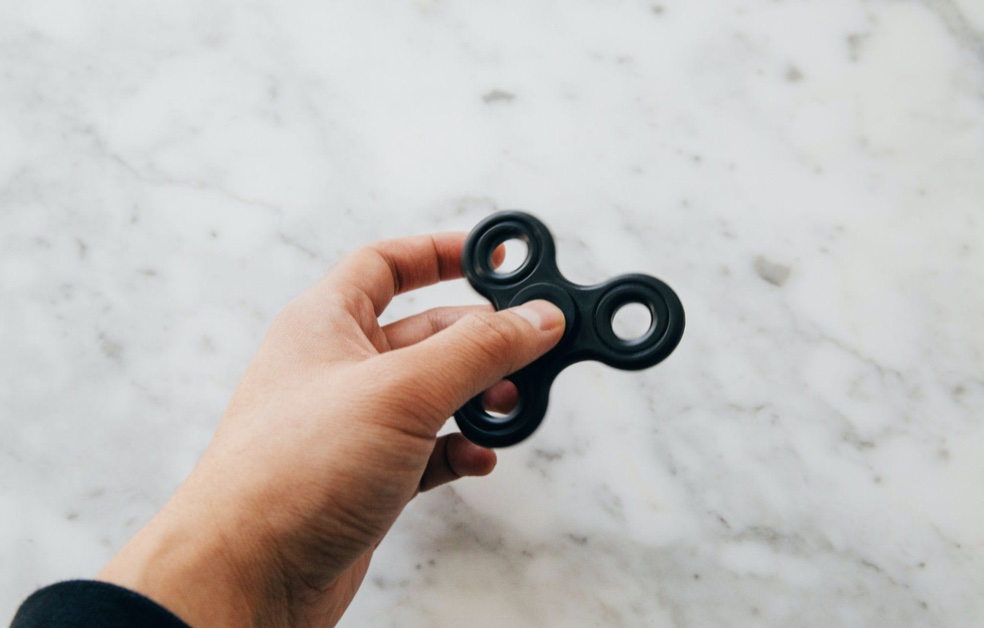
Harnessing the Fidget by Amanda Winstead explains how to deal with kids who can’t sit still. If you want a fidgety child or adult to be more productive this article will help.
Introduction
- Fidgeting is often associated with a lack of attention or disinterest for both kids and adults. However, it’s not without its benefits. Whether your children are clicking pens or playing with actual fidget toys, fidgeting can actually contribute to enhanced focus and increased information retention — and not just during their youth. Learning how to make the most of fidgeting can help students achieve long-term success, even after they graduate from school and enter the workforce.
- Harnessing the fidget can require different methods from student to student. However, when you identify one individual’s needs, you can help them turn their fidgets into a tool, rather than a distraction. Let’s explore how fidgeting can present itself in toddlers and kids, why it helps with focus, and how you can productively nurture fidgets.
How Fidgeting is Identified in Young Kids
- Fidgeting doesn’t always look the same from student to student. In fact, several fidgeting styles are commonly seen in young children. For example, while some students prefer to keep their hands or mouths preoccupied, others fidget by moving their entire bodies.
- No fidgeting style is inherently bad, but students often won’t know how to use their fidgets positively without the guidance of adults. But with the help of educators and parents, children can successfully get the stimulation they need without distracting their peers or losing focus themselves. For example, while kids with busybodies may constantly shift their weight in a chair without guidance, teachers who offer wobble chairs or resistance bands can help them achieve movement in a non-disruptive way.
- Identifying each child’s fidgeting style can help you transfer their movement to a better outlet, so every student can achieve equal focus in class.
Why Fidgeting Helps Students Stay Focused
- So what is it about fidgeting that makes it helpful for focus? Physical activity naturally boosts your body’s levels of dopamine and norepinephrine, which are two neurotransmitters that boost your focus and attention span. Since mindless fidgets — such as drumming fingers, squeezing stress balls, or walking while studying — don’t require any thought, they can offer these attention-boosting benefits while allowing students to zoom in on their primary task.
- Fidgeting is especially helpful for kids with ADHD, who often need an outlet to release their high levels of energy. It can also help students with autism receive much-needed stimulation and cope with sensory overload. Students with anxiety may also be able to ease their nerves.
- Suppressing movement, on the other hand, can make it difficult for some kids to turn on their brains and process the information they’re receiving from their teachers, books, or videos. Without fidgets, students may be overwhelmed by an entire room full of distractions.
Fidgeting Continues in the Workplace
- Fidgeting isn’t just something that happens at school. When students graduate and start their careers, their fidgeting doesn’t go away. For many adults, fidgets promote engagement at work and enhance creativity. When workers give their natural movements an outlet, they can improve their performance at work and contribute more to their teams.
- However, no company wants a nuisance in their office or on their video calls. Helping people nurture their fidgets in a way that’s not noisy or noticeable — perhaps by wiggling their toes instead of shaking their legs — can give them transferable skills for a professional workplace.
How to Nurture Fidgets at Home in a Productive Way
- While parents are often accustomed to asking fidgeting kids to stay still, children can benefit more when their parents allow them to express their fidgets in positive, productive ways at home — not just in the classroom. Dedicated at-home learning spaces that are conducive to fidgets are critical in our modern world, in which digitized education reduces physical stimulation, especially for kids with ADHD.
- On top of offering different ways to fidget from their workspace, parents can offer sensory play activities that stimulate the senses to continue their brain development after school. For example, Play-Doh and busy boards with knobs and dials can be incredibly stimulating, while encouraging kids to explore the world in a way that’s conducive to their learning and fidgeting style.
Embracing Fidgets Can Lead to Brighter Futures
- While fidgets are often viewed in a negative light, they can actually aid students and adults in their educational journeys. Parents and teachers must increasingly support fidgets with the right outlets, rather than preventing them altogether. By giving students the right outlets, you can enhance their focus, memory, and even their creativity in the long run.
- Personalize your support by identifying how your child fidgets, then provide non-distracting mediums for them to express themselves through movement. When students understand how to harness their fidgets, they can succeed in any learning or working environment without distracting their peers. This can be a huge win for any teacher or parent.
Amanda Winstead
- Amanda is a freelance writer out of Portland focusing on many topics including educational technology. Along with writing she enjoys traveling, reading, working out, and going to concerts. If you want to follow her writing journey, or even just say hi you can find her on Twitter.
DrDougGreen.com If you like the summary, buy the book





